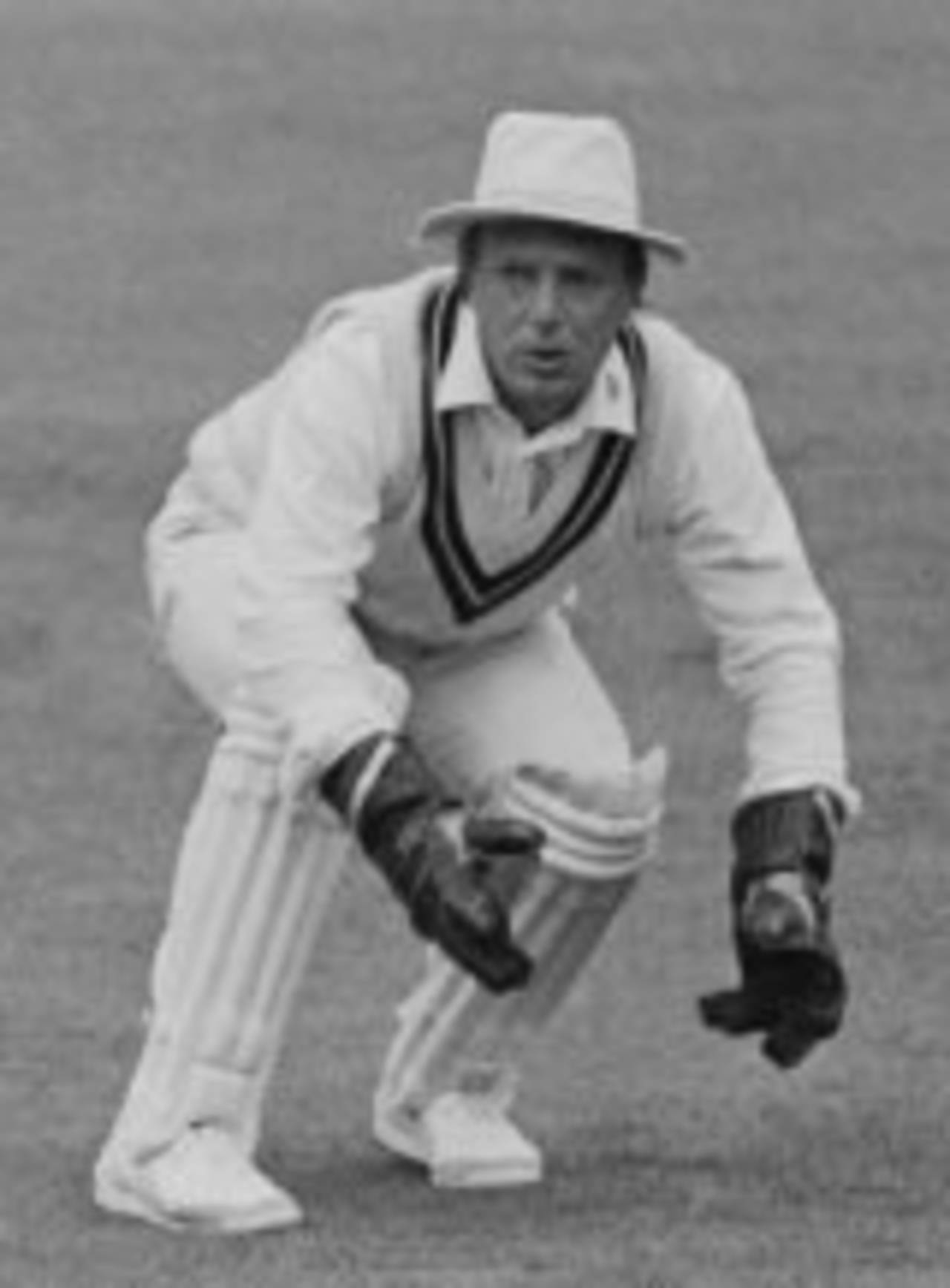Analysing wicketkeepers by byes conceded
Assessing wicket-keeping ability in Tests by analysing the rate of conceding byes

Paul Downton conceded just 1.71 byes per 600 balls • Getty Images
Nevertheless, we can make a reasonable effort at assessing pure keeping ability by looking at bye rates. To some extent these are also dependent on the bowlers (if they spray the ball down leg a lot then there'll be more byes), but in general the results are much better.
These were the bye rates per 600 balls for away keepers by country:
Australia: 3.24
Bangladesh: 3.25
England: 3.50
India: 4.96
New Zealand: 3.02
Pakistan: 4.97
South Africa: 2.60
Sri Lanka: 4.27
West Indies: 4.48
Zimbabwe: 1.19
I used as a reference point 3.5 byes per 600 balls. So, if a keeper conceded 2 byes in an innings in India, that would be adjusted to 2 * 3.5 / 4.96 = 1.14 byes.
Here are the results. I've given both the raw byes per 600 balls and the adjusted byes per 600 balls. Qualification: 20 Tests as wicket-keeper:
per 600 balls name m balls byes byes adj PR Downton 30 29517 84 1.71 1.52 DJ Richardson 42 43222 143 1.99 2.22 APE Knott 95 101704 422 2.49 2.32 NS Tamhane 21 25659 137 3.20 2.37 IDS Smith 63 63672 277 2.61 2.63 Khaled Mashud 44 37099 152 2.46 2.69 SMH Kirmani 88 91761 506 3.31 2.70 KS More 49 54558 280 3.08 2.80 RW Taylor 57 59085 285 2.89 2.81 RD Jacobs 65 69122 294 2.55 2.83
Paul Downton had the good fortune to play some Tests for England in the 1980s, after the introduction of covered wickets and before the modern trend of picking keeper-batsmen. Khaled Mashud is the most surprising name to see here. This list is not perfect, but at least names like Knott and Taylor are near the top. The full list can be seen here.
It will become easier to assess wicket-keepers after some years of club-based Twenty20 cricket. With free player movement between sides, bowlers will bowl with various keepers over the course of a career. Then we'll be able to look at how many dismissals each keeper got off the same bowlers, and so dismissal counts will be a much more useful way of assessing pure keeping ability.
Note: There will be some errors in the byes tallies, because of keepers going off the field and being replaced. Also, I've given the bye rates to two decimal places, but I haven't checked how significant the second decimal place is.